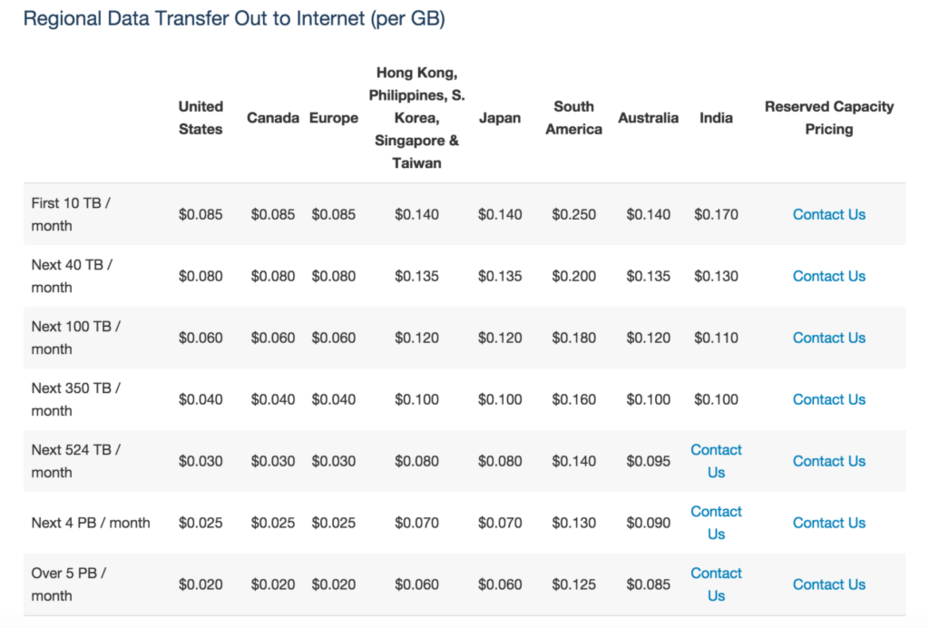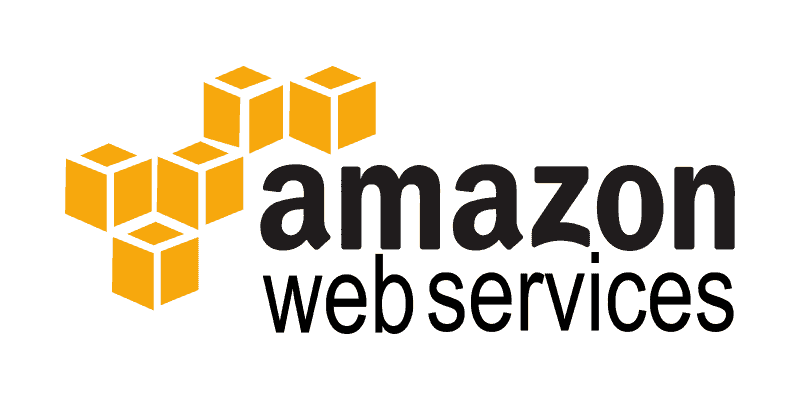Amazon CloudFront Content Delivery Network is based on a robust network that allows unparalleled speeds and adaptability to match the most current needs of your website.
Also, Amazon CloudFront offers simple functionality, integration with other Amazon Web Services, website distribution, and other web applications, plus so much more.
Amazon CloudFront Content Delivery Network Company Overview
Genuine CloudFront analysis (2020 update) from actual Twitter users to help you make the best-informed decision whether to purchase CDN from Amazon CloudFront or not.
Profit from the free tier of Amazon CloudFront, and set up an account today. The free tier contains 50 GB of data transfer out, 2 million requests for HTTP and HTTPS. The cheapest paid CDN plan for CloudFront is Pay for what you are using every month. A few additional product categories they offer are:
- Networking,
- Analytics,
- Database,
- Security and Identity,
- Application services, etc.
We will, however, be concentrating primarily on their CDN in this Cloudfront analysis. This will include an overview of their existing PoP network, the features they sell, and pricing.
Amazon CloudFront Network
Cloudfront currently has 41 Presence Points and a total of 63 edge servers, with most of their edge servers located in North America (US), the EU, and Asia. The table below is a list of server locations Cloudfront uses within these 3 continents.
| US | EU | Asia |
|---|---|---|
| Ashburn x 3 | Amsterdam x 2 | Chennai |
| Atlanta x 2 | Dublin | Hong Kong x 2 |
| Chicago | Frankfurt x 5 | Mumbai x 2 |
| Dallas/Fort Worth x 2 | London x 3 | Manila |
| Hayward | Madrid | New Delhi |
| Jacksonville | Marseille | Osaka |
| Los Angeles x 2 | Milan | Seoul x 3 |
| Miami | Paris x 2 | Singapore x 2 |
| New York x 3 | Stockholm | Taipei |
| Newark | Warsaw | Tokyo x 2 |
| Palo Alto | ||
| San Jose | ||
| Seattle | ||
| South Bend | ||
| St. Louis |
Amazon CloudFront Features
Amazon CloudFront Content Delivery Network has a lot to deliver, although cost-effective. The service is based on a robust network that allows amazing speeds and adaptability to suit the most current needs of your website.
Amazon CloudFront also offers basic flexibility, integration with other Amazon Web Services, website delivery, and other web apps, and so much more.
Cloud Infrastructure
One feature that separates Amazon CloudFront from its competitors is its cloud-based delivery system which offers 2 main advantages: reliability and elasticity that can not be shaken.
With the cloud network around, the content of your website is hosted on the massive edge servers of Amazon CloudFront while being processed in the cloud, too.
That, in effect, gives the content a much bigger power spread and more resources to draw from, which means your end users can pull up the various pages on your website quicker.
Additionally, the cloud-based delivery system allows for the distribution of the content as needed.
But when a large number of surfers attempt to access your content simultaneously, Amazon CloudFront diverges much of its resources and services from your platform to satisfy the demand. And the extra power and services are then moved to other sites when demand subsides.
Functionality
Amazon CloudFront helps you to build 2 distribution types: HTTP / HTTPS protocol web delivery, and RMTP delivery and its variants.
That simply means the service can be used to distribute website content (both static and dynamic), web applications, as well as audio, video, media files, and documents.
This makes Amazon CloudFront an ideal choice for a wide range of people, from website owners to app developers and media content delivery professionals.
Amazon Web Services Compatibility
The hardware of Amazon CloudFront is designed to completely integrate with all other Amazon Web Services, from Amazon S3 to EC2, and from SNS to SES. CloudFront also easily integrates with an easy to use file manager, CloudBerry Explorer.
So you can add the advantages of these services to your website and thus give it a competitive advantage over other similar sites to yours.
AWS Management Console
Amazon provides a wide variety of web services that some business owners can find daunting. This is where the AWS Management Console comes into play. You can handle all aspects of your account, including on the go, with the AWS Management Console.
This includes wizards and workflows to build your own solutions, track your monthly service-by-service expenses, manage security features, and set up new IAM users. For most users, the console is simple and intuitive and provides a search feature so you can find what you need easily.
Advanced Security
Amazon CloudFront provides every different angle of protection. Besides the usual SSL certificates, this service also supports a wide range of security software that allows you to do everything from restricting content delivery in some countries to enforcing the HTTP-only connection between CloudFront and your web server of origin.
With its two-tiered AWS Shield protection service, Amazon offers DDoS security which offers automatic inline mitigation to keep your site up and running as smoothly as possible.
The Standard Shield is appropriate for most sites but those with large or sensitive data sets can opt to use AWS Shield Advanced.
They also offer AWS Web Application Firewall, which helps prevent common threats to your web apps.
You can monitor traffic quickly, and even deploy custom rules to block different patterns of attack. AWS WAF is completely adjustable and you pay for only what you’re using.
And thanks to the compatibility with Amazon Web Services, AWS WAF and other AWS protection applications can be incorporated as an additional security measure.
How Does CloudFront CDN Increase Website Speed?
- Your customer visits your website
- They request one or more files, e.g. an image
- The domain name server routes the request to the best (usually the nearest) CloudFront edge location
- CloudFront searches the cache for the file in the edge location
- If the file is found, CloudFront sends it to your customer
- If the file is not found, CloudFront tests the requirements in your delivery.
CloudFront Pricing
The pricing model for Cloudfront is Pay as You Go. And there are no annual payments and there is no minimum fee. They also have a free tier that offers 50 GB of data transfer out to users and 2 million HTTP and HTTPS requests per month for one year. When the one year mark is up, you’ll be forced to start charging for the traffic you ‘re using.
Pricing for Amazon Cloudfront is split into 3 separate sections:
- Data transfer out to the Internet
- Data transfer out to origin
- HTTP requests (per 10,000)
The following tables outline the cost of pricing on each segment.
The primary fee is what they call Local Data Transfer Out to the Internet for using Amazon Cloudfront services. The charge refers to the amount of bandwidth transmitted to your visitors from their edge servers. Pricing here starts at $0.085 and fluctuates according to position and amount.
Data transfer out to the Internet

2. Data transfer out to origin
The next portion of the pricing is focused on how data is transmitted back to the origin server from the Cloudfront edge servers. That includes HTTP requests for DELETE, Choices, Fix, Update, and PUT. The cost fluctuates according to where the visitor is located but there is no volume price.

3. HTTP requests (per 10,000)
Finally, Cloudfront even charges, depending on how many requests are made for HTTP. The following prices are based on a request base per 10,000. The cost fluctuates depending on the location of the user, as well as whether the requests are made over HTTP vs HTTPS.

Amazon CloudFront FAQ:
Why does site speed be important?
One of the key benefits of using CloudFront is that it helps to increase the speed at which the site is paying. But is this really relevant, exactly? As it turns out, indeed. An increase in site load time results in a higher bounce rate, meaning the longer it takes for your site to load, the more users will give up and go back to the search results to find a new site. Research shows you can raise sales by shaving milliseconds off your load-time.
In addition to how website speed affects users, websites such as Google and Facebook look at how quickly the website loads to decide how much users are expected to view their content, which means that fast load times are good for SEO. Google PageSpeed Insights is a valuable resource to find out where the website stands.
How to SPEED up my site with CloudFront?
CloudFront is a network of CDN or Content Distribution. They work by saving the website data to various geographical locations in a network of caches. When a user visits your site, the cache which is nearest to them will deliver your web data, resulting in faster delivery.
Will CloudFront be implemented as other amazon Web services/products?
Yeah, CloudFront integrates with other Amazon Web Services extremely well.
What is the Cost of CloudFront?
CloudFront has a free tier to sell, so you can start at no discount. New customers receive 50 GB of Data Transfer Out and for the first year two million HTTP and HTTPS requests per month. You switch to pay after that, as you go model. Amazon has a calculator available to help you measure your expenses.
CloudFront Reviews– In Conclusion
Finally, this analysis by Cloudfront has given you some insight into Amazon’s CDN service functionality and pricing models. Amazon is a well-known, trusted, and trustworthy brand name, for sure. They have an assortment of resources that are all accessible inside a single dashboard that may prove more convenient to some web developers.
Although their pricing model is Pay as You Go, be aware that they are paying in three different ways: Internet data, Origin data, and requests for HTTP. Bandwidth costs often increase dramatically depending on where the visitors come from (e.g. priced at $0.25 per GB for South America). Therefore it is important to understand the global distribution of your current website users as well as your CDN budget when looking at Cloudfront as a CDN provider.











Leave a Reply